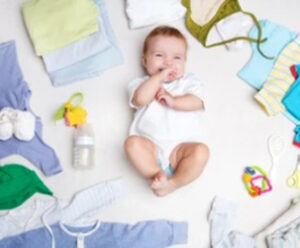 In this month’s Embroidery Column, Jas Purba, managing director of ETC Supplies, outlines the regulations you should take into consideration when embroidering clothes for children.
In this month’s Embroidery Column, Jas Purba, managing director of ETC Supplies, outlines the regulations you should take into consideration when embroidering clothes for children.
Many embroidery companies are totally oblivious regarding the regulations for babywear and childrenswear. This even overlaps into nightwear for all ages.
Information regarding these standards can be found on EN 14878:2007. Several test methods are used such as, BS 5438 and BS 5722 and others. The situation becomes more confusing when garments are used as play clothing, which then falls under BS EN 71-2. This includes embroidered teddy bears and fancy-dress costumes.
All such clothing and other products must be marked in red ‘Keep away from fire’. Your supplier should be able to provide you with correct guidance when you purchase such items for decoration. Take a few minutes and have this conversation with them. A reputable supplier will have already carried out such tests on your clothing and soft toys etc.
The simple rule of thumb is that ‘items made wholly of synthetic substance which melts without decomposing or burning are taken as complying; without performing a test’.
Comply with the regulations
Simply, these means if you use 100% polyester embroidery thread it will melt and not burn. It is no use ignoring your underthread as that must also comply. The same goes for your embroidery backing. Many people will use a viscose or viscose blend backing which will fail as it burns. The most suitable embroidery backings to use would be our Waffle backing which is made of 100% synthetic substance or any heat soluble or water-soluble films.
When you buy such consumables, it is your responsibility to check each batch for suitability of use. Get this wrong and not only will you have trading standards chasing you, but if your product causes an injury, you could be liable for more serious proceedings.
How are these items tested? Generally, the sample is mounted vertically, and a gas flame is applied to the face of the sample for 10 seconds. This can change depending on what BS test is being performed.
If this is your main business, it may be worth speaking to a specialised consultancy who can help you comply with the regulations.
 Printwear & Promotion The Total Promotional Package
Printwear & Promotion The Total Promotional Package




